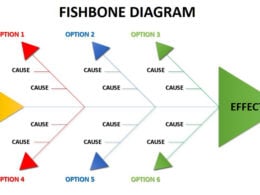Life is filled with danger signals and warning signs. If you pay
attention you can avoid the potholes and the problems that they cause.
An oil leak in your car can be fixed with a $3 gasket. If ignored, your
engine could seize and you’ll pay $2000 for a replacement.
So
what's our sales training tip for today? It's that selling has its own
danger signals and warning signs, so we're going through some of the
key sales problems you may encounter, with the business advice to help you avoid them.
Start reading now.
It’s
dangerous if you’re not reading. Change is a warning signal, and you
need to learn about changes in your business. Any change is an
opportunity for you or your competition. When staff or company needs
change, salespeople need to respond quickly to ensure that their
products continue to meet customer needs. Reading the newspaper is a
source of knowledge about change. When you read the newspaper, you
learn about changes in business that impact your customers’ businesses
and then your own. How else can you easily learn about mergers,
strategic focus issues, competition, growth and failure to meet
business objectives? Remember sales and business books, too. Even
incorporating 15 minutes a day of additional reading will have a
positive impact on your business knowledge and ultimately your business.
Set sales call objectives for each sales call.
You’re
in trouble if it’s difficult to set call objectives for your sales
calls. Your job is to bring value to your customers. Another greeting
by a smiling face is not a source of value. Objectives that add value
to your customers’ operations involve avoiding costs, reducing costs,
or simplifying an operation for your customer. Planning before the
sales call should include the steps to accomplish your objective.
Having difficulty establishing your call objective is a clue that you
might not be giving your customers a reason to do business with you.
Know the key decision makers at your accounts.
It’s a bad sign if you don’t know the key decision makers at all your
accounts. The economic decision maker reaches decisions based on cost.
The technical decision maker decides based on specifications. The user
makes decisions based on satisfaction with using your product. If
you’re only calling on one decision maker, if you’re unfamiliar with
all decision makers, or if you’re unaware of each of their concerns,
the red light goes on. Pay attention when your contacts move on and are
replaced by others. You need to reestablish relationships with the new
contact by identifying their key concerns and motivators. Forgetting to
do the work to make a new contact loyal will leave you vulnerable to
the past loyalties they’ve established with other suppliers.
Develop a systematic process for prioritizing your accounts.
Your
selling time should be given to your accounts based on their
probability of buying, their importance to your sales goals, and their
need to see you. You need to ask and answer, “When is this account
likely to buy? Is this a strategic account because of location, a
particular product or volume? Is this a significant problem that
warrants my time now?” In all cases the answer will determine what you
should be doing and how much time you spend with each account. In all
cases determine that your customer’s needs are met with your lowest
cost solution. If a phone call will work, why make a sales call? All
customer contacts should be made after you identify your sales
priorities and determine appropriate levels of service according to
those priorities.
Do you find yourself saying what
you would have, should have or could have done after you fix a problem?
This is a sign that you ignored a danger signal. It’s so much easier to
avoid a sales problem than to fix it. When you hear yourself saying,
“If only I had called on that new project engineer earlier I wouldn’t
have lost the account” it’s time to start looking at your other
business. You’re probably missing some warning signs there, too.
Maura Schreier-Fleming is president of Best@Selling, a sales training and consulting organization in Dallas, Texas .






